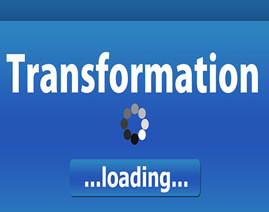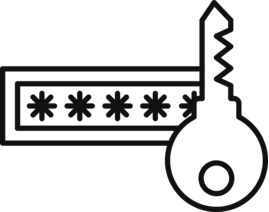Building thriving business partnerships with Open API
Apple and Google recently collaborated to assist in enabling contact tracing and reducing the spread of the virus.
‘To further this cause, Apple and Google will be launching a comprehensive solution that includes application programming interfaces (APIs) and operating system-level technology to assist in enabling contact tracing’ - the >blog post by Google explained. ‘First, in May, both companies will release APIs that enable interoperability between Android and iOS devices using apps from public health authorities. These official apps will be available for users to download via their respective app stores - it further revealed.
While such a partnership is just what is needed to strengthen our efforts against the pandemic, it also draws attention to APIs and their roles in making lives easier in this era of synergy and collaborations. I mean, there are examples all around us. Open API and their constant evolution have led to a best-of-breed customer experience that enterprises and customers are absolutely delighted about.
An open API, also termed as a public API, is an application programming interface that permits the owner of an application service to give access to consumers of that service, such as programmers and application developers.
A combination of digital services that take away the stress of seeking individual service providers for everything they need has helped consumers in a big way. A classic case in point? Uber - that did everything from route calculation to sending out receipts with the help of multiple API services offered by other vendors. In no time, it had acquired a market capitalization that made even the best brands in the world go green with envy.
Open API Current Trend
While API services enable an unparalleled user experience to customers, they help companies attain rapid growth in size and revenues. >Open API initiative has come-up with specifications around Open API. BFSIs worldwide are now leveraging the power of Open API for a multitude of reasons. Inter-bank collaborations are becoming increasingly common too.
As the >World Fintech Report 2020 by Capgemini rightly points out, “The gap between what customers expect and what traditional banks currently deliver has never been wider, but now is the right time for banks to catch up from front to back-end to offer the best customer experience.”
Singapore's regional bank, >DBS Bank for example, supposedly has one of the world's largest API developer platforms and has on-boarded over 50 companies already to develop solutions for its customers. With more than 155 APIs across 20+ categories, the bank deploys just about a handful of useful, reusable, and in-demand APIs to achieve data-based transformations and a new high in customer relationships.
Open API - Why?
Enterprises feel an inherent need to rely on popular applications used by customers and business clients to collaborate and offer better technological solutions and services. The need is to be where customers want and need them to be, opening the doors to new collaborative opportunities. APIs seem to be the perfect choice to attain all this and more.
.jpg)
Let’s dive into each of these reasons to get better insights.
Evolving needs - As expectations increase, the modern customer wants a multi-channel experience round the clock and in real-time. Unlike in the past when organizations, particularly from the banking, finance, and insurance sectors, had a more product-oriented approach, the focus has now shifted towards being more customer-centric.
Increasing competition - Start-ups are disrupting the market with services that are fast and competitively priced. Partnering with the right vendors gives enterprises the necessary leeway to get into a bigger market. All they need is an open API architecture that enables a rapid 'plug and play' kind of integration of the many services they offer.
Data - It is what enterprises bank upon. It's always easier to offer the right, customized solutions when you know your customers well. Tying up with multiple vendors allows for a huge data pool that helps them fine-tune their pricing and risk models. Big Data and Artificial Intelligence have enabled companies to process and analyze the constant inflow of data and change it into actionable strategies that win customers.
Technology - Technology is perpetually evolving, which means it is becoming increasingly challenging even for big enterprises to stay abreast of the latest technological innovations all the time. By collaborating with other niche companies through the open API architecture, they find it easier to stay on top of their game.
Architecture - The large, closed, monolith, traditional architecture is not suited for a digital world. Modern companies are quickly moving towards a micro-services based architecture that makes it easier for micro-services to communicate with each other via well-defined open API.
What does it mean to have an Open API?
Collaborative support is the need of the hour. It is however imperative that a successful open API facilitates the establishment of new channels for revenue, ensures customer satisfaction, and gives insights.
.jpg)
Establishes new channels for revenue – This means, end-users to be charged with transaction fees for using the solutions/services, partners to be charged for service/data usage, and revenue-sharing agreement to be devised for partners.
Ensures customer satisfaction - APIs should be customer-centric wherein instead of bombarding customers with products, reveal only those that offer value and satisfaction.
Gives insights - It should capture valuable data in a way that it helps obtain better insights that can, in turn, be used to cross-sell and up-sell for better revenues.
In the recent past, Citi >announced six strategic partnerships with leading corporations in Hong Kong to accelerate the development of open Application Programming Interface (API) in the city and to make available easy and speedy banking services in response to consumers' increasingly digital lifestyle.
What do you need to do to embrace Open API?
Understanding the role of API is not enough. You need to ensure that it is carefully monitored and adapted/updated as required. While doing so, care has to be taken that the request and reply interface (used by external parties) or the API format undergoes very minimal changes and continues to support older versions of the format. This will ensure seamless working even when a new version of the API is delivered.
It should be supported by development portals and should enable quick on-boarding. Also, there should be >standardization in the APIs as developers would be too reluctant to integrate a completely different API every time they want to connect with a new partner.
Open API - A catalyst for growth
Collaborations and partnerships are now an absolute necessity. They are the means to become agile and attain the desired ROI. Those still unsure about the potential of Open API need a substantial rethink.
>Anirban Bose, CEO of Capgemini’s Financial Services and Member of the Group Executive Board points out, “The world has changed dramatically over the last couple of months. Businesses will evolve and emerge from the COVID-19 crisis in different and profound ways. For traditional banks, this will translate into an even greater need for digital experience through further collaboration with FinTechs.”
This applies to other financial sectors too. Open API are the gateways to growth and digital transformation. It’s time you jump on the API bandwagon. The global pandemic is changing global perspectives and perceptions. The time to change is now. >Monetary authorities are announcing support packages for FinTech firms to help them adopt digital solutions.
>Open Bank Project PSD2 Suite enables financial institutions to securely and rapidly comply with PSD2, an EU regulation.
You May Also Like

Install These Free Security Tools Now!
Have you heard of intrusion detection systems? Also known as IDS, this software is often used to det...

Crowdfunding drives unprecedented efficiency
Crowdfunding has become the center of attention in the field of financing. It is also an increasingl...

Everything As a Service
Transition from Capex economy to Opex Economy World is in a transition from Macro to Micro. Granula...

IoT in Malaysia – 2019 Predictions
The year 2014 is when Malaysians started to Google the term “IoT” and ever since, the hy...

The business case for 5G
As of 2018 ,33 MNOs have been involved in 5G trials within Asia Pacific, accounting for 44% of 77 tr...

A New Face On Digital Transformation: Engagement Innovation
Whether we believe it or not we are in the fourth industrial revolution – The Digital Revoluti...

Technology & Competitive Data Analysis More Money – More Competition; everyone wins
Technology & Competition – More Money, Better Deal for Consumers & Companies – H...

Anatomy of Fintechs that’s redefining Financial services business models.
On a weekend in 2013 during monsoon I invited my friend and his family for a dinner at my place. It ...

Blockchain Taxation
World has paid a heavy price for trust, transparency, controls and accountability. Globally there i...

Why Is CDR / CDNR So Important?
Addressing the Fundamental Deficiency in Today’s Mainstream Cyber Security Strategies From Det...

CIO Business leadership - shifting from tech to business leadership
CIOs are no longer technocrats, they are business enablers and crucial part of organisation. CIOs sh...

Ideas and Opinions | 5G as an Enabler of Smart Cities
When 5G comes to mind these days, we think of “is this REALLY it?” and “have we re...

Lessons in Machine Learning
More organizations are using machine learning for competitive reasons, but their results are mixed. ...

Digital Indoor System: Critical Infrastructure for Digital Economic Transformation
Digital Indoor System: Critical Infrastructure for Digital Economic Transformation Developme...

The Changing DNA of the CIO CIO as Business Enabler
The idea that the role of the CIO has now gone beyond technology and innovation related issues, and ...

Today's Digital Miners
Today's Digital Miners I guess by now everyone of us who have read an article or two on digital...

Digital Transformation Readiness Test for Banks
Digital Transformation Readiness Test for Banks The questions banks need to try to answer to test ...

What is Machine Learning
What is Machine Learning? According to Tom Mitchell, a professor at Carnegie Mellon University has d...

Transformation of industry verticals through 5G – Focus and Look Indoors
Transformation of industry verticals through 5G – Focus and Look Indoors Now that 5G is...

Humanize Technology - back to the basics of serving human needs, humanly
Humanize Technology - back to the basics of serving human needs, humanly The subjects of Digital Tr...

Creating the foundation for Sustainable Innovation
Creating the foundation for Sustainable Innovation In 2011, Marc Andreessen famously proclaimed tha...

About Tech Data Diversity And Inclusion
About Tech Data Diversity And Inclusion I am excited about attending the Hispanic IT Executive Coun...

Digital Transformation: Customer Centricity & Intimacy
Digital Transformation: Customer Centricity & Intimacy It was inspiring listening to IMD Profess...

Is Industry 5.0 putting humans back in the center
Industry 4.0 focused on the machines. Is Industry 5.0 putting humans back in the center? I was on a...

Importance of IT Resilience
Importance of IT Resilience Disclaimer: The posting written here is solely of my own comment and ...

Implementing a SaaS Solution – The 3 Major Technical Challenges
So when are you planning to implement a SaaS (Software as a Service) solution? Very soon, if not alr...

So you want an #Innovation Hub?
Innovation, Design Thinking, Digital, Disruption, Agile, Transformation - these are new buzz words t...

The Unsung Hero; The Data Scientist
It is quite likely you are wondering ‘what on earth’ am I on - for cooking up such a tit...

How POC projects made me a better Project Manager
How did I get here? Project Management is a tough job. We need to keep a track on budgets, timeline...

How Data and AI can help in COVID-19 crisis
Since the first report of coronavirus (COVID-19) in Wuhan, China, it has spread to at least 100 othe...

The Future of Indoors with Digital Indoor Systems
Digital Transformation, 5G, and COVID-19 have triggered further growth in indoor traffic Digital tr...

Seizing Opportunities in the ICT Sector
The Increased Pace of Digital Transformation Automation, digitalisation, artificial intelligence (A...

CoVID19, Digital, ML
CoVid19 hit us and has now created the “new Normal” in terms WFH, Video conferences, bal...

Do we really need CEOs, CFOs, and CIOs?
Why CMOs and CTOs are all you need to succeed in today's world This is my first article in a se...

Cinématographe by the Lumière Brothers & History of AI
The Lumière brothers, Auguste and Louis, French inventors and the pioneer manufacturers...

Avenues To Expedite The Incorporation Of 5G Into Industry
5G has been launched in Asia Pacific. South Korea, China, the Philippines and other countries have b...

4G/5G Fixed Wireless Access: A Critical Revenue Growth Engine
In studying key success factors of solutions, it can almost always be shown that the underlying conc...

Big Data Machine Learning IoT and PI
In the era of the Internet of Things (IoT), an enormous amount of sensing devices collect and genera...

Asia’s Plan To Leverage 5G Is Missing A Regional Strategy
The day the world’s first commercial 5G services promised a “great leap” is still ...

Learning from #COVID19…Would remote working be the new normal?
Musings of a Technology Evangelist In the past few months, we have all learnt many new terms&hellip...

Principles of Sustainable Cybersecurity
In past few years the annual rate of cybersecurity breaches has almost been doubled, and as a result...

Data Governance a key element for Digital Transformation
For the last few years, corporate environment, used to speak and hear lots of financial/management t...

Seven Traits of a Millennial CEO
With a staff strength and annual turnover in the order of billions and trillions respectively, Chris...

What is a Pass Key and Is Now the Time To Adopt Them?
What is a Pass Key and Is Now the Time To Adopt Them? There has been recent news about a mass...








Nischal Tanna
Group CEO TransformHub
Nischal is currently Group CEO with transform hub in Singapore. Nischal was working with the Citi Fintech agenda as an Engineering group manager. His passion for technology is rooted from the start of his career in 2003. Affinity to banking and technology shifted him to Financial sector in early 2013. An increased interest in the Banking business paved the way for his MBA in Finance & Operations as well as the Oxford Fintech program. Blockchain, Digital economy, and APIs has also been his research interests for past few years.